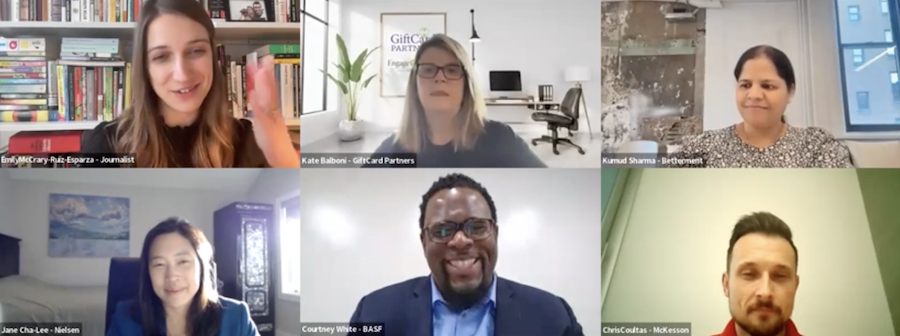How a Culture of Well-Being Goes Hand-in-Hand with Greater Productivity


“We want everyone to know that we’re a stigma-free company, one that focuses on openness, acceptance, and understanding about mental health and well-being,” said Courtney White, head of HR for agricultural solutions at the global chemical manufacturer BASF. “Safety and well-being are key priorities that are front and center in our engagement strategy.”
So central, in fact, that one way the company protects its workers’ well-being is by giving people permission to just say no: When teams are overworked, when more responsibilities would threaten safety and well-being, then they have the latitude to say so.
“We have to help our people leaders and our employees know how to actually say ‘no’ to things in order to know what to say ‘yes’ to,” White said. “So we make sure that everyone has a voice–because while most times you would love to do everything, you just can’t.”
Employee well-being was the focus of a panel discussion at From Day One’s December virtual conference on the arc of change in 2024. In the conversation, which I moderated, White and his professional colleagues in people operations and employee engagement shared their philosophies on how companies can keep workers happy and productive in the coming year.
Setting the Cultural Tone
Attitude matters, and attitude is often set at the top of the organization, said Jane Cha-Lee, the SVP of global talent and culture at the market-research firm Nielsen. “One way that leaders can help create environments of well-being and support is to just show care. It’s so basic, but I think it’s hard to do in practice.”
Tell your people managers that it’s good–and expected–to acknowledge tough and uncomfortable circumstances, to be frank about what the managers know and what they don’t know. “In the worst of times is where we like to show the best of us,” Cha-Lee said. “What is it that you can provide so that you remove as many distractions as possible and just allow the employee to focus on their work?”
Cha-Lee was clear that managers aren’t the only ones responsible for shouldering the weight of company morale. “It’s also about empowering the employee and to own what it is that they need,” she said.
Especially in critical moments–during layoffs and reorganizations, major disruptions and crises–let workers and leaders take mental-health days and set an example for their teams, said Kumud Sharma, the chief people officer at Betterment, which offers employers ways to help workers manage their finances. “It’s OK to say, ‘you take the rest of the day off,’ or ‘the company will take the rest of the day off,’ and not focus on things immediately because something has just happened or a communication has just gone out.”
As the dust settles, continue to check in on the well-being of your workers and your leaders. “Do a weekly check-back and a monthly check-back to make sure that there isn’t someone who’s suffering from a decision or a non-decision,” she said. “Provide them access to EAP programs to any other internal programs and solutions that we have.”
Leaving the Office Behind
When someone is out of the office, work should be left behind, and a culture that supports people in their absence is one in which people are free to care for themselves and their families.

Chris Coultas, the senior director of performance and engagement at the pharmaceutical-distribution company McKesson, recently took paternity leave and used the time to be present with his growing family. That can happen only when workers can trust their manager and their colleagues to have their back.
Teams have to build trust to have confidence that the work will get done when a team member is out, he said. “If I were somewhere where there was an expectation of being ‘on’ even when you’re ‘off,’ paternity leave would have been a lot different. [Instead], I was able to come back energized and pleasantly surprised with how much progress had been made.”
Offering the Best Choices
Even if your company institutes wellness-focused policies and practices and offers a benefits package to match, it’s only effective if workers are confident using what you offer. “Offering the best benefits is not enough. If employees don’t know what they are, they won’t understand how to use them,” said Sharma. Instead of waiting for employees to ask questions, Sharma prefers being proactive. Catch your employees in moments of opportunity, like when they join the company, when they undergo a life change like getting married or having a baby, and when it’s time for open enrollment.
“During open enrollment, instead of just sending out the forms and paperwork, we actually bring the providers on-site. We set up sessions for employees to have one-on-one consultations and office hours that continue even through the year,” she said.
The panelists unanimously recommended that employers offer their workers a choice in the way they take advantage of their benefits. “What is good for one person isn’t necessarily good for another, and a reward that is meaningful to one person isn’t necessarily meaningful to another,” said Kate Balboni, VP of sales operations at employee-incentive platform GiftCard Partners. “Happier employees equals engaged employees, and engaged employees equals increased productivity, which then positively impacts the bottom line and helps to maintain a positive work culture.”
Emily McCrary-Ruiz-Esparza is a freelance journalist and From Day One contributing editor who writes about work, the job market, and women’s experiences in the workplace. Her work has appeared in the BBC, the Washington Post, Quartz, Fast Company, and Digiday’s Worklife.
(Featured photo by Daisy-Daisy/iStock by Getty Images)
The From Day One Newsletter is a monthly roundup of articles, features, and editorials on innovative ways for companies to forge stronger relationships with their employees, customers, and communities.